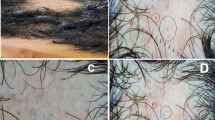Abstract
The traditional assessment of the intensity of stress effects includes measurements of the content of the stress hormone cortisol in biological fluids, such as blood and less frequently, saliva or urine. However, various factors that influence the biosynthesis and/or metabolism of cortisol and the importance of measurement of cortisol over a large period of time make group studies and interpretation of data difficult using this biological material. Moreover, detection of the level of cortisol at the time of sampling of blood or saliva does not reflect the total stress load to which the patient was subjected in the period preceding the study. Recently, a quantitative assay of cortisol in hair was considered as an approach to the evaluation of the long-term (months) period of system stress load. Here, we adapted an assay method for cortisol in human hair. The method is based on methanol extraction of cortisol from a hair sample, methanol evaporation, and dilution of the extracted substances in phosphate-buffered saline followed by the enzyme-linked immune-sorbent cortisol assay. We also applied this approach to assessment of the corticosterone level in rodent hair, which may be used for comparative/translational studies.
Similar content being viewed by others
References
Fries, E., Hesse, J., Hellhammer, J., and Hellhammer, D., Psychoneuroendocrinology, 2005, vol. 30, pp. 1010–1016.
Nijm, J. and Jonasson, L., Ann. Med., 2009, vol. 41, pp. 224–233.
Cohen, S., Janicki-Deverts, D., and Miller, G., JAMA, 2007, vol. 298, pp. 1685–1687.
Groschl, M., Rauh, M., and Dorr, H., Clin. Chem., 2003, vol. 49, pp. 1688–1690.
Wietzman, E., Fukushim, D., Nogeire, C., Roffwarg, H., and Gallaghe, T., J. Clin. Endocrion. Metab., 1971, vol. 33, pp. 14–22.
Gibson, E., Checkley, S., Papadopoulos, A., Poon, L., and Daley, S., Psychosom. Med., 1999, vol. 61, pp. 214–224.
Galbo, H., Int. J. Sports Med., 1981, vol. 2, pp. 203–211.
Villain, M., Cirimele, V., and Kintz, P., Clin. Chem. Lab. Med., 2004, vol. 42, pp. 1265–1272.
Wennig, R., Forensic Sci. Int., 2000, vol. 107, pp. 5–12.
Russell, E., Koren, G., Rieder, M., and Van Uum, S., Psychoneuroendocrinology, 2012, vol. 37, pp. 589–601.
Yamada, J., Stevens, B., and de Silva, N., Neonatology, 2007, vol. 92, pp. 42–49.
Sauvé, B., Koren, G., Walsh, G., Tokmakejian, S., and Van Uum, S.H., Clin. Invest. Med., 2007, vol. 30, pp. E183–E191.
Raul, J., Cirimele, V., Ludes, B., and Kintz, P., Clin. Biochem., 2004, vol. 37, pp. 1105–1111.
Pragst, F. and Balikova, M., Clin. Chim. Acta, 2006, vol. 370, pp. 17–49.
Loussouarn, G., Br. J. Dermatol., 2001, vol. 145, pp. 294–297.
Ito, N., Ito, T., and Kromminga, A., FASEB J., 2005, vol. 19, pp. 1332–1334.
Davenport, M., Tiefenbacher, S., Lutz, C., Novak, M., and Meyer, J., Gen. Comp. Endocrinol., 2006, vol. 147, pp. 255–261.
Kalra, S., Einarson, A., Karaskov, T., van Uum, S., and Koren, G., Clin. Invest. Med., 2007, vol. 30, pp. E103–E107.
Van Rossum, E., Manenschijn, L., Spijker, A., Koper, J., Jetten, A., Giltay, E., Haffmans, J., and Hoencamp, E., Int. Soc. Psychoneuroendocrinology, 2011, vol. 19, pp. 64–65.
Author information
Authors and Affiliations
Corresponding author
Additional information
Original Russian Text © M.V. Onufriev, S.V. Freiman, T.A. Druzhkova, A.B. Guekht, N.V. Gulyaeva, 2015, published in Neirokhimiya, 2015, Vol. 32, No. 1, pp. 86–88.
Rights and permissions
About this article
Cite this article
Onufriev, M.V., Freiman, S.V., Druzhkova, T.A. et al. Technical approaches to a cortisol assay in hair for retrospective stress evaluation. Neurochem. J. 9, 73–75 (2015). https://doi.org/10.1134/S1819712415010067
Received:
Published:
Issue Date:
DOI: https://doi.org/10.1134/S1819712415010067




